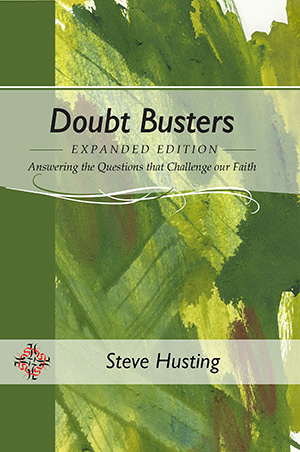Remember when the early scientists thought to prove that life could be created by electricity in an ideal atmosphere? That never really panned out; the proteins created by that method were right-handed proteins and all organic life required left-handed proteins. (Let’s overlook the irony of an intelligent scientist deliberately choosing which gases would work together with the right amount of electricity to use to produce life.) In the end, scientists realized that life could not arise from an oxygen-rich atmosphere because oxygen oxidizes – it would kill any organism trying to survive.
So they moved to the water, assuming that the “prebiotic soup” would produce life by chance. Then, protected and nourished by the nutrients in water, life would grow and evolve. Unfortunately, there, too, they hit an impasse, for water, too, breaks down organisms that do not have a protective shell. Which came first, the protective shell, or the life within?
Interestingly enough, if a prebiotic soup ever existed, then evidence for it would be found in the ancient rocks of yesteryear. Alas, all efforts to find evidence of the theory of prebiotic soup in rocks failed miserably. Solid science disproved shaky science.
One of the reasons they could think that a bolt of electricity could excite life from a cell was because the light microscopes of the time showed the cell as a light-colored mass with a darker mass within. Simple; like gelatin. That’s all they thought it was. Fast-forward to today. The electron microscope now reveals that a cell is composed of 10 million million atoms! And the atoms reside in different rooms in the cell, each collection of atoms with a specific role to play, whether building, transporting, or other roles. Some of these tiny atoms include a propeller spinning in a ball bearing attached to its body – spinning at 10 thousand revolutions per minute! It’s time to stop examining science with 18th-century tools. If they had the electron microscope back then, would they think to zap it with electricity to see if it would come alive?
The theory of random chance has gotten a sound drubbing by science and many have abandoned it. There are so many parts that have to be linked together in a precise way, and assembled into precisely ordered components that it is impossible for life as we know it to form randomly within the current time frame for evolution.
The discovery of DNA hasn’t helped the theory of evolution, either. DNA is stored information composed of four letters, which, combined like letters in a book, become instructions on how to build all the physical parts of a living being. (Our strands of DNA, when laid out like a book would result in as many volumes as the Encyclopedia Britannica!) How did that information get there? By random chance? Some theorize that just like snowflake or rock crystals could spontaneously form and create patterns, even so, the DNA could, over time, have created patterns, and thus, the human body. But that breaks down because all the ordered patterns we’ve seen in nature are repetitive patterns. If this theory were true, then the A, C, G, T of DNA would always snap together the same way. They would make the same amino acids over and over again. That’s like trying to give instructions to someone to build a plane with a book composed of only “take take take take take.” The patterns in nature don’t get more and more complex; they just repeat themselves.
What about natural selection? The problem here is that natural selection presupposes reproducible beings in the first place. Just think, you have to first believe that two creatures’ sexual organs have evolved lock-step over time to keep up the reproduction of species, then you have to assume that some of the offspring will mutate into something that better adapts to their environment. This all breaks down, unfortunately, at the level of the cell. For the theory to “work,” it must presuppose that the cell is already dividing, and presuppose DNA with already-written instructions to do this. Thus, “natural” selection is a contradiction in terms.
Some scientists have thought that perhaps the DNA code is snapping together in random ways and over time came up with the information to produce life. However, the DNA letters do not snap to each other. They are actually connected to a base that connects them all together.
“But maybe evidence will appear later that validates evolution.” But isn’t that contradictory? Aren’t we supposed to start with known facts from science, experience, and deduction, and build up from there? This kind of thinking proves that macro-evolution is more a faith than a science, since it doesn’t need facts to support it.
Unfortunately, much of this information has yet to be made public. The scientists who push evolution do not talk openly about the problems of evolution – probably because they don’t like the alternative. There’s nothing wrong with science; just with scientists who refuse to follow where the science leads.
It’s no wonder that today’s scientists are considering string theory of alternate universes and even hazarding the idea of life originating from another planet. Is it a coincidence that these same scientists are atheists?
Isn’t it time we put evolution to rest?
The above facts were gleaned from a well-written book on the subject. If you want more details on the thoughts above, get the book, The Case for a Creator, by Lee Strobel.




